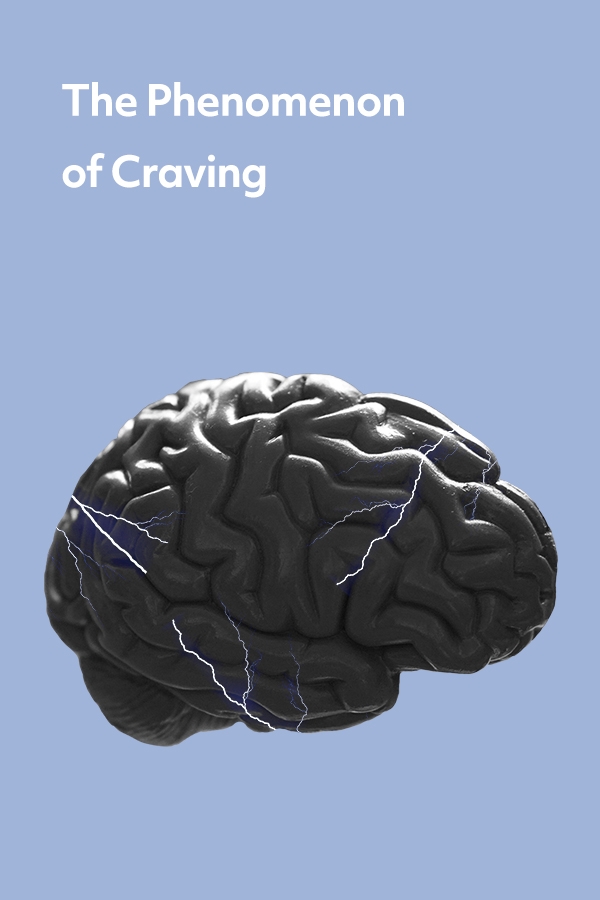Cravings can be intense, and you’re not weak for feeling them! But you don’t have to give in.
“Cravings” sound pretty harmless, especially when people use the word to describe their preference for what flavor of ice cream to get or what genre of movie to watch (e.g “Oooh, let’s watch His Girl Friday! I have a craving for a romcom!”). But the fact is that cravings can have a real impact on a person in recovery. Researchers have some debate over how to measure cravings, but there’s a strong consensus that cravings do exist and can feel overwhelming when they occur.
Let’s talk about the phenomenon of craving and some of the ways you can resist or overcome it!
It’s not just a matter of willpower
So what is a craving? It’s a phenomenon in the brain that, when activated, creates an intense desire to use the addictive substance or do the addictive behavior. Over time, substance use has affected your neurocircuitry, changing how your brain responds to stimuli. At their core, cravings are a symptom. This is not the same feeling as just wanting or liking something. The physical and emotional sensations of cravings vary from person to person and substance to substance. Some experience feelings of excitement, like rapid heartbeat and flushed skin. Some feel shaky and experience intense longing. For some people, cravings manifest as a vivid flashback to what drinking or using felt like.
If you experience cravings, don’t beat yourself up. You are not weak or flawed for finding the sensation of cravings overwhelming sometimes. It is important—and possible—to work to overcome the cravings rather than submitting to them.
Cravings aren’t forever
If everyone who entered recovery felt extreme cravings all the time forever, there would probably be a lot fewer sober people in the world. But cravings tend to lessen in both frequency and intensity the longer you stay in recovery. You can also learn to identify and navigate your addiction triggers, which will make it less likely that a craving will blindside you unprepared.
When a craving does rear its head? It may feel intense, but often cravings don’t last for long periods of time. You can outlast them.
There are medications that can help
There have been major strides in identifying, researching, and utilizing medications that can counter the phenomenon of craving. This is often called medication-assisted treatment (MAT). FDA-approved medications can reduce cravings for opioids and alcohol, and have been shown to improve people’s well-being in recovery and to reduce relapse. Recent research provides hope that MAT for methamphetamines may be on the horizon, but a treatment plan for that has not been approved yet.
Some believe that using medication to reduce cravings is ‘cheating.’ But we think that it only makes sense to use effective tools that are available to you. Cravings are a symptom of a health issue (substance use disorder), and there is nothing wrong with treating that symptom. Especially when doing so leads to greater success in reaching your recovery goals. MAT is especially effective in combination with behavioral health support, so many programs offer it in conjunction with recovery groups, coaching, or therapeutic options.
Fight cravings with these strategies
It’s a good idea to learn some strategies for fighting the phenomenon of craving, so that you’re prepared when it strikes. Here are a few that we find especially helpful:
- The Exiting Strategy—Sometimes our surroundings are part of the trigger for a craving. So change your surroundings. Either physically leave (even just briefly) or alter your environment in other ways, like switching seats, adjusting the lighting, or putting on music.
- The Social Strategy—Reach out to others. A trusted friend, sponsor, or family member can give you support and a welcome distraction. If you can’t get ahold of anyone, you can still connect online via email, social media, message boards, and online meetings.
- The Taking Time Strategy—As mentioned above, cravings don’t last forever! Use a timer to set an amount of time, like 15 minutes or an hour, to wait before making a decision about your next move. The craving will usually fade before the time is up.
- The Soothing Strategy—For many folks, cravings have a physical impact. Pay attention to your physical responses, and take action to soothe or interrupt them. You can take a few slow, deep breaths, stretch, stand in the sun, use an ice pack or heating pad … any soothing self-care to ease the sensation of craving.
- The Play-It-Through Strategy—Mentally play the tape through in your head, imagining what will happen if you give in to your craving. Even if you imagine immediate relief, in the long run, there will probably be unpleasant consequences to giving in.
- The Humor Strategy—Humor can be a major mood-booster and stress-reliever. So watch a funny video, listen to a comedy podcast, or view a funny website.
- The Distraction Strategy—Take your mind off your craving by distracting yourself with something else. Sing along with a favorite song, plan a future activity, dive into a Wikipedia rabbit hole, or play a mobile game. Whatever gets you immersed and distracted.
Cravings are an unpleasant fact of recovery, but they don’t have to dominate you! You can overcome them with behavioral strategies, and there are medications that may help. And with time under your belt and better knowledge of your triggers, you’ll be amazed at how you can conquer the phenomenon of craving that once seemed overpowering!










